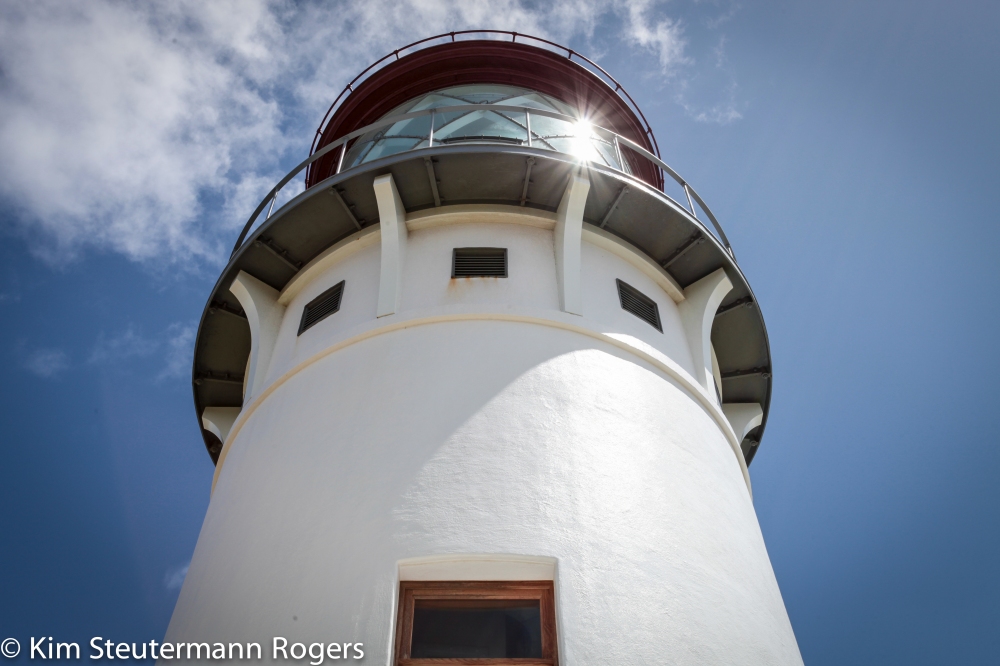
This past Saturday, at sunset, I climbed the 51 steps of the Kilauea Point Lighthouse for the last time as a park ranger. When I reached the Watch Room, I slowly and carefully closed the round, brass vents that allow air to circulate. This was the floor where lighthouse keepers spent most of their time during the days before electricity when a fire magnified by the precisely cut and placed glass prisms of the second-order Fresnel lens sent out its bright beacon some 20 miles distant.
During my past 60 days as a park ranger, I’ve thought about the people who have climbed the same circular staircase over the 102-year lighthouse history. And during the past week, in preparation for a presentation I gave during Saturday’s “Lighthouse Day,” I dug through archives, examined historical photos, and read entries of the station log during the 63 years of service from 1913 to 1976 in which lighthouse keepers spent every single night—barring the years of World War II—ensuring the conical tower at the northernmost point of the main Hawaiian Islands put out its signature double-flash every 10 seconds.
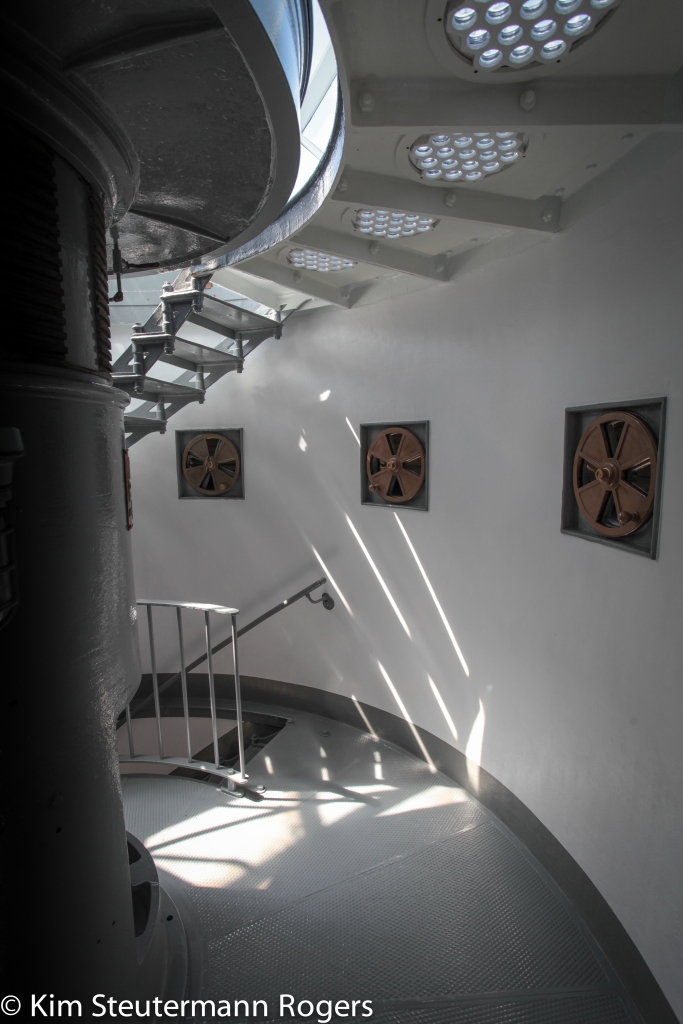
Hearing anecdotes of the legendary Samuel Apollo Amalu and his long tenure as “Dean of Hawai‘i Lighthouses,” I thought about life on a light station. Reading entries in the station log, I imagined another dedicated keeper, David K.K. Kahaunaele, braving Category One wind and stinging rain as he made his way to the lighthouse and its adjacent radio house during Hurricane Dot in 1959 to ensure the station’s beacon was pulsing and its lighthouse was lighting up the stormy skies. Looking at a photo of Keeper Claude Platt’s three children, I wondered what it was like to grow up as a “Lighthouse Kid.” But I could never quite find enough information to answer all my questions about life on Kīlauea Point Light Station.
Then, on the eve of the completion of my temporary assignment, I wondered how all these people felt about leaving Kīlauea Point and its bright beacon, spray of crashing surf, and the nightly reverberating sounds of moaning birds nesting in burrows around the Point, including underneath their lava rock homes. Did they part with a kind of Shakespearean “sweet sorrow,” as I did? Happy to lose the mundane parts of the job but sad to leave the place?
Because Kīlauea Poing has sticking power.
Places can be that way.
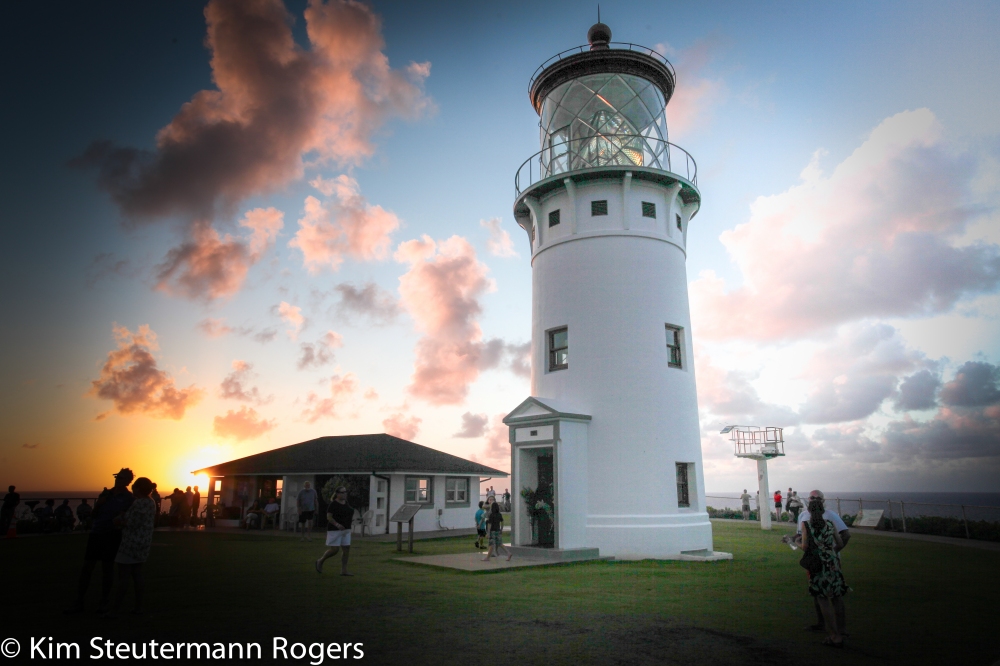
Last week, a man approached the fee booth where I was working. “Do I have to pay if my grandfather worked here?” he asked.
It’s not uncommon for people to try and enter the refuge for free. Sometimes they do so legitimately with a National Parks pass or because they are active duty members of our military. Others think they should get in free because they are a tour guide, Hawaii resident, student, senior citizen, or, simply, because they pay taxes to our country.
“Congratulations on remembering your pass,” I say to the former, and “Thank you for your service,” I say to the latter. For the rest, I politely but firmly say, “It’s five dollars per person, please.”
I have no problem taking people’s money. Our refuge is woefully underfunded, as are, I’m sure, all national wildlife refuges and national parks. For those people who forget their National Parks pass—and this happens multiple times a day—I accept their money and suggest they not kick themselves for forgetfulness but pat themselves on the back for contributing to the conservation of Kīlauea Point National Wildlife Refuge.
But the attempt by the tall, middle-aged man who tried to leverage his grandfather’s service at Kilauea Point Light Station to get in free was a first for me. It still didn’t work. In his defense, he didn’t push it and was even handing me his money as he asked the question. I think he really just wanted to tell someone that his grandfather was once a lighthouse keeper on the very hallowed grounds of Kilauea Point.
“You didn’t stay long,” I said when the man exited a few minutes later.
“I just wanted to touch the lighthouse before leaving the island,” he said. Clearly, he wanted to make his annual connection with the place.
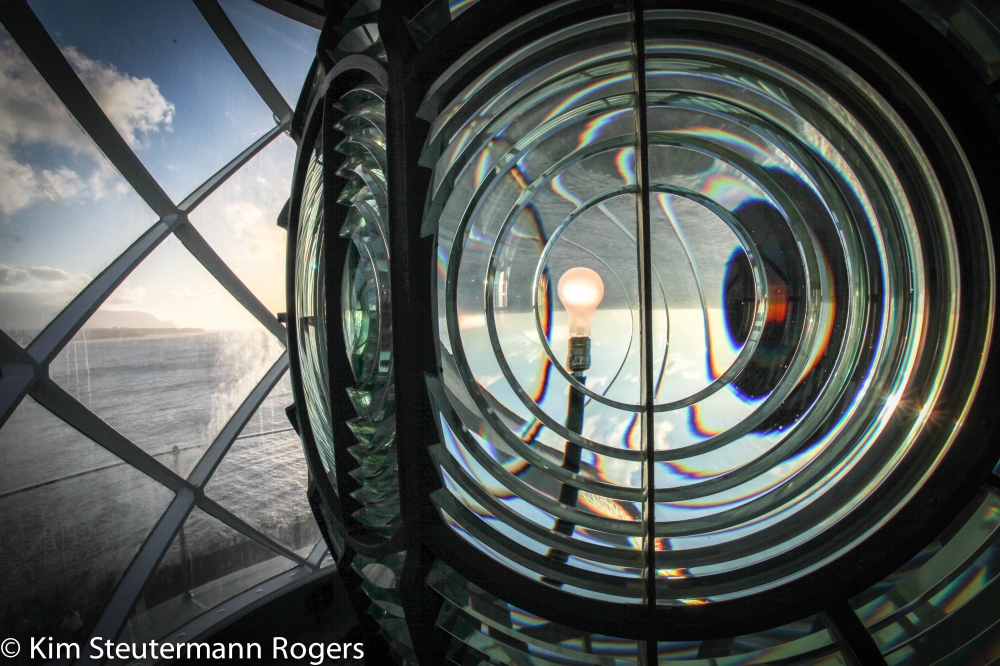
The man’s need to return year after year to Kīlauea Point might be called, “place attachment” by experts in environmental psychology, something defined as the emotional bond between a person and place.
The journalist Joan Didion writes, “A place belongs forever to whoever claims it hardest, remembers it most obsessively, wrenches it from itself, shapes it, renders it, loves it so radically that he remakes it in his own image.”
As I walked away from the Daniel K. Inouye Kīlauea Point Lighthouse for the last time in my brown uniform, I ducked twice to avoid a collision with a Wedge-tailed shearwater returning to its burrow. I also thought about the things I witnessed in my 60 short days as a park ranger: the catastrophic molt of an Hawaiian goose’s flight feathers after a good shake of the nēnē’s wings, the black flight feather landing nearly at my feet after a Great frigate bird plucked it from a Red-footed booby during an aerial assault that took place all but right in front of my face, the screeching call of Kermadec petrels racing through the air, and the Laysan albatross pair displaying courtship behavior–bill clacking, head shaking, and whistling–as they soared in lazy arcs overhead.
These are stories I took with me when I closed up the lighthouse and walked off the refuge as wedge-tailed shearwater dropped from the sky, scurried to their burrows, and began their courtship calls that could easily be mistaken for a symphony of bawling babies.
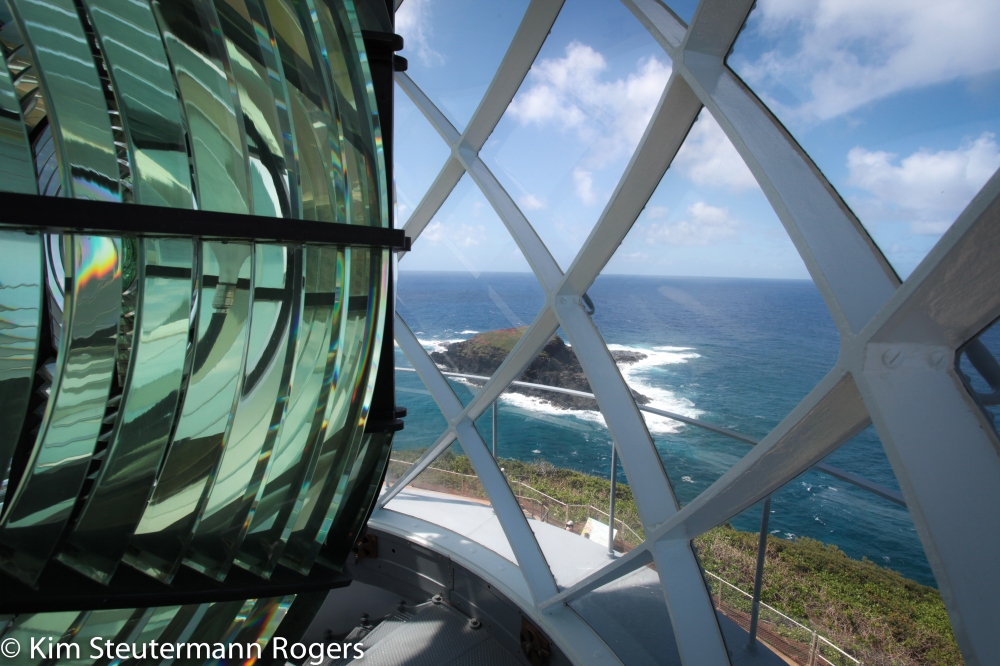
What I’ve learned over the past 60 days is that Kīlauea Point is more than a lighthouse, a clamshell lens, or a wind-swept finger of land jutting into the sea. It is a place awash in stories. Keepers Amalu and KK had their stories along with Platt and his children. I can dig through archives for years trying to fill the holes in the historical record of their time at Kilauea Point and never really grok their experiences. And that’s O.K. Because, now, I have my own that I have re-made into my own image and they lessen the sorrow of departure and enhance the sweetness of my 60 days as a park ranger.

Once again, you reach my heart and make me so proud of who you are. I love that you are in my life.
LikeLike
Ah, Diane, I am honored to have you in my life, as well. And not just for the wine recommendations;-)
LikeLike
Kim Another wonderful story and pictgures. You will be missed.
LikeLike
Thanks, Diane. I’ll be back in blue as a volunteer. It’s a much better color on me, anyway!
LikeLike
Bonding to place — a topic that I knew would wrench me inside, and it did. In a lovely way. Beautiful piece, Kim.
LikeLike
Thanks, Sue. I’ve learned relationships with place can be as strong as those relationships with humans–and almost as strong as those with dogs;-)
LikeLike
What a great experience, thanks for taking us along with your writing.
LikeLike
My pleasure. Thanks for reading, Susan.
LikeLike
Nicely done Ranger Rogers, Mother of Nature…isn’t wonder full to nourish such a sense of place. So lucky you live Kauai!
LikeLike
Ah, yes, the wonder of nature is awesome, erasing in an instant the sometimes crazy that comes with a life of people! Thanks for commenting, Elise.
LikeLike
Kim,
Not sure what I enjoyed more – your vivid, illustrative prose or your stunning photos! You certainly know how to bring a place to light.
Miss you!
Susan
LikeLike
So great to hear from you, Susan. (Nice “light” pun, too;-) What’s book club reading these days?
LikeLike
I love that Didion quote: “A place belongs forever to whoever claims it hardest, remembers it most obsessively, wrenches it from itself, shapes it, renders it, loves it so radically that he remakes it in his own image.”
Thanks for sharing!
LikeLike
It was a new Didion discovery for me, and I quickly glommed onto it!
LikeLike
I love that: “glommed.”
LikeLike
Nice thoughts Kim. We will be on Kauai for a month next week and look forward to several trips to the Lighthouse. Laden down with cameras, etc. Will look for you.
LikeLike
Please do!
LikeLike
What a great read Kim. Just beautiful!
LikeLike